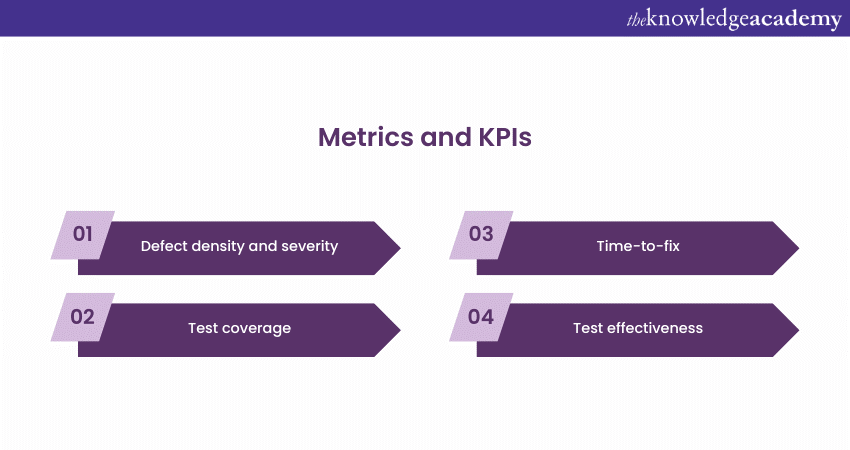We may not have the course you’re looking for. If you enquire or give us a call on +1 7204454674 and speak to our training experts, we may still be able to help with your training requirements.
Training Outcomes Within Your Budget!
We ensure quality, budget-alignment, and timely delivery by our expert instructors.

In the dynamic realm of Software Development, Software Testing plays a pivotal role in ensuring application quality, reliability, and functionality. It's a meticulous process that goes beyond mere error detection, aiming to achieve specific goals and Objectives of Software Testing that contribute to the overall success of a software project.
In this blog, we'll delve into the Objectives of Software Testing and explore how they align with the overarching goals of ensuring a seamless user experience.
Table of Contents
1) Introduction to Software Testing
2) Core Objectives of Software Testing
3) Aligning Objectives with Goals in Software Testing
4) Testing Objectives in Different Testing Phases
5) Measuring Success: Metrics and KPIs
6) Conclusion
Introduction to Software Testing
In Software Development, Software Testing is a pivotal pillar that ensures the end product's quality, functionality, and performance. It is a systematic approach to identifying and rectifying potential flaws, glitches, and vulnerabilities that could compromise the software's integrity.
Software Testing is not a standalone phase but an integral part of the development lifecycle. It starts early in the process and continues throughout, guaranteeing that each stage, from design to deployment, is thoroughly examined. This meticulous scrutiny safeguards against defects due to coding errors, integration complexities, or changing user requirements.
The significance of Software Testing extends beyond error detection. It enhances user satisfaction by delivering a seamless, glitch-free experience. It minimises post-release issues, reducing the costs associated with fixing problems in the later stages. Furthermore, effective testing fosters credibility and trust among users, clients, and stakeholders.
Software Testing acts as a shield, fortifying the software against potential pitfalls that could compromise its performance, security, and reputation. By validating functionality, mitigating risks, and upholding quality, Software Testing ensures that the end product not only meets but exceeds user expectations, thereby contributing to the success of the entire development lifecycle.
Core objectives of Software Testing

Software Testing is a critical quality assurance process in the Software Development lifecycle. Its core objectives extend beyond mere error identification; they encapsulate a range of essential goals that collectively enhance the overall software quality.
a) Identifying defects and errors: One of the primary Objectives of Software Testing is to unearth defects and mistakes within the software code and functionality. By meticulously probing the application, Testers ensure that potential issues are identified, documented, and rectified before the software is released.
b) Verifying correctness: Testing verifies that the software behaves as intended and meets its functional requirements. It aims to confirm that each feature, module, and component functions accurately and consistently, aligning with the specifications.
c) Validating user requirements: Ensuring the software meets user expectations is another key objective. Through testing, developers verify that the software aligns with user requirements, delivering a product that caters to user needs.
d) Ensuring reliability and performance: Software Testing aims to guarantee the application's reliability, stability, and performance under various conditions. It assesses how the software functions in real-world scenarios and under different loads to ensure a consistent and efficient user experience.
Aligning objectives with goals in Software Testing
The success of any software project hinges on the seamless alignment of testing objectives with the overarching goals. At the heart of this alignment lies the aim to deliver a high-quality software product that meets and exceeds user expectations. By meticulously identifying defects, verifying correctness, validating requirements, and ensuring reliability, Software Testing contributes to achieving these fundamental goals.
One of the primary goals is to reduce the risk of software failures and post-release issues. Thorough testing helps identify and rectify defects before they reach end-users, preventing costly and reputation-damaging failures. Moreover, by consistently delivering a software product that performs optimally and meets user needs, testing enhances user satisfaction and loyalty. A seamless user experience is a shared goal, and testing is crucial in ensuring its realisation.
Aligning objectives and goals in Software Testing doesn't just enhance the product; it minimises risks, accelerates time-to-market, and fosters positive user experiences. It underscores the pivotal role of rigorous testing in delivering software that stands up to scrutiny while promoting user confidence and loyalty.
Unlock Quality Assurance Excellence: Register for Our Software Testing Green Belt Course Today and Elevate Your Testing Skills.
Testing objectives in different Testing phases
In the intricate tapestry of Software Testing, different testing phases each have unique objectives that collectively ensure the reliability and quality of a software product.
Unit Testing zeroes in on individual components, aiming to verify their correctness and isolate defects at the smallest scale. This phase lays the foundation for a sturdy software structure.
Integration Testing takes the spotlight as integrated modules come into play. Its objective is to ensure the seamless interaction between these components, detecting any issues arising from their integration.
System Testing zooms out to validate the entire software system's functionality. This phase tests the software as a whole, focusing on confirming that it performs as expected across different scenarios.
User Acceptance Testing (UAT) marks the final frontier before deployment. Its objective is to ensure that the software aligns with user requirements and expectations, providing the end-users with a product that meets their needs.
Each objective contributes to the holistic goal of delivering a reliable, high-quality software product in these distinct testing phases. By addressing different dimensions of software functionality and performance, these objectives collectively fortify the software's integrity and enhance user satisfaction.
Become a Master of Software Quality: Join Our Software Testing Black Belt Course and Elevate Your Testing Expertise.
Measuring success: Metrics and KPIs

In Software Testing, measuring success is paramount to gauge the effectiveness of testing efforts. This is achieved through a range of metrics and Key Performance Indicators (KPIs) that provide quantifiable insights into the quality and reliability of the software.
a) Defect density and severity: Defect density calculates the number of defects identified in a particular unit of code or module, offering a snapshot of code quality. Severity classification helps prioritise critical defects that could impact the user experience or system stability.
b) Test coverage: Test coverage evaluates the extent to which the software code is exercised by test cases. It ensures all functionalities are tested, reducing the chances of untested paths leading to hidden issues.
c) Time-to-fix: This metric measures the time taken to resolve identified defects. A shorter time-to-fix indicates efficient defect management and faster iteration cycles.
d) Test effectiveness: Test effectiveness measures the percentage of defects found by testing against the total defects present in the system. It highlights how well testing detects issues, guiding improvements in testing strategies.
Get certified with our ISTQB Software Testing Foundation Course today!
Conclusion
In Software Development, the Objectives of Software Testing act as guiding lights, ensuring quality, reliability, and user satisfaction. By aligning these objectives with overarching goals, Software Testing becomes a dynamic process that paves the way for seamless, high-quality software products in today's digital landscape.
Gain the deep knowledge of testing process with ISTQB Advanced Level Test Manager Course!
Frequently Asked Questions
Upcoming Business Analysis Resources Batches & Dates
Date
 ISTQB Software Testing Foundation
ISTQB Software Testing Foundation
Mon 13th Jan 2025
Mon 10th Mar 2025
Mon 12th May 2025
Mon 14th Jul 2025
Mon 15th Sep 2025
Mon 10th Nov 2025
Mon 15th Dec 2025







 Top Rated Course
Top Rated Course



 If you wish to make any changes to your course, please
If you wish to make any changes to your course, please


